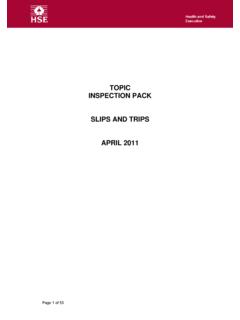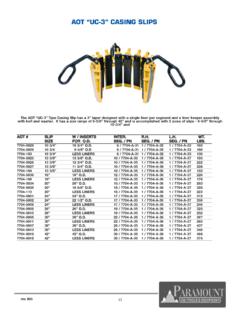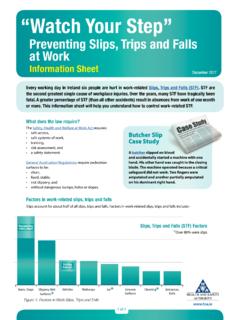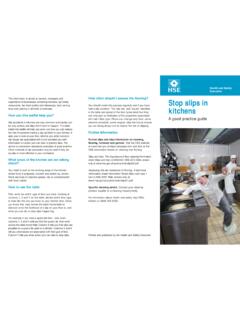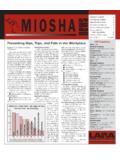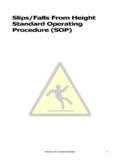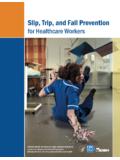Transcription of Preventing Slips, Trips and Falls Quiz - gckats.net
1 Preventing Slips, Trips and Falls Quiz 1) You come across a spill. You should immediately: a. Rush off to get help b. Block off or flag the spill area c. Start cleaning it up 2) True or false? Falls account for more workplace injuries and deaths every year than any other accident category. 3) An example of a slip hazard is: a. A spilled cup of coffee b. Grease from someone's shoes c. A piece of paper d. All of the above 4) Which of these isn't a trip hazard? a. Carpeting b. Extension cord in a walkway c. An open file cabinet drawer 5) All of the following contribute to Falls EXCEPT: a. Blocked vision b. Running or rushing c. Weight d. Not paying attention 6) What do the 4 Fs stand for? _____. _____. 7) True or false? Once a spill has been dried, the surface is no longer a slip hazard. 8) True or false? Wearing shoes with worn tread can be dangerous. Copyright 2006 Progressive Business Publications 9) Why are slip , trip and fall near-misses valuable?
2 _____. _____. 10) True or false? There's no way to walk safely on a slick or wet surface. Name: _____. Date: _____. Copyright 2006 Progressive Business Publications Preventing Slips, Trips and Falls Answers to Quiz 1. B. 2. True 3. D. 4. A. Tears, nicks and bunches in carpeting are hazards. Carpeting by itself isn't a hazard. 5. C. 6. Fix, Flag, Forewarn, Find 7. False. A floor surface may be sticky or slick even after cleaning the spill. More thorough cleaning may be needed. 8. True. 9. They're learning experiences for everyone. Near-misses can help prevent future accidents. 10. False. It's always best NOT to walk on a wet or slick surface. But you can reduce the likelihood of falling by taking slow, short strides, with toes pointed outward and arms extended. Copyright 2006 Progressive Business Publications
